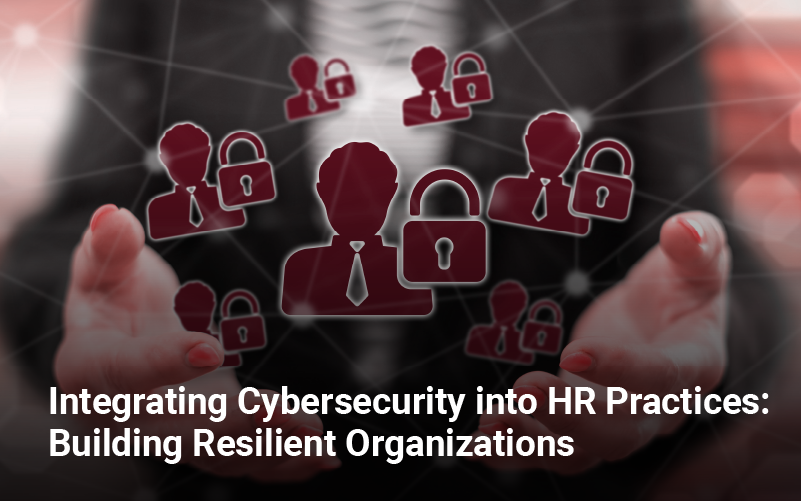In the rapidly evolving digital landscape, cybersecurity has emerged as a critical concern for organizations across all industries. Understanding and addressing cybersecurity risks is essential for protecting data and ensuring the resilience and continuity of business operations. As a faculty member specializing in human resources, change management, and business continuity at EC-Council University, I will address the intersection of these areas with cybersecurity in this blog.
 Dr. Adrianna Davis is an educator with over 10 years of experience in higher education. She earned her Bachelor’s degree at the University of South Florida, where she studied both Psychology and Public Health. During her time at USF, she developed a passion for organizational effectiveness and leadership. She later went on to pursue a M.S. in Leadership and a Doctor of Education in Organizational Leadership from Nova Southeastern University (NSU). Her dissertation study investigated how emotional intelligence was learned and applied among middle level managers through the implementation, documentation, and integration of an emotional intelligence training intervention.
Dr. Davis’s scholarship interests are on the topics of emotional intelligence, industrial organizational psychology, motivation, employee engagement, and leadership development and education.
Dr. Adrianna Davis is an educator with over 10 years of experience in higher education. She earned her Bachelor’s degree at the University of South Florida, where she studied both Psychology and Public Health. During her time at USF, she developed a passion for organizational effectiveness and leadership. She later went on to pursue a M.S. in Leadership and a Doctor of Education in Organizational Leadership from Nova Southeastern University (NSU). Her dissertation study investigated how emotional intelligence was learned and applied among middle level managers through the implementation, documentation, and integration of an emotional intelligence training intervention.
Dr. Davis’s scholarship interests are on the topics of emotional intelligence, industrial organizational psychology, motivation, employee engagement, and leadership development and education.
The Human Factor in Cybersecurity
While advanced technologies and robust IT infrastructure are essential for cybersecurity, the human factor remains a significant element for a resilient system. Employees are often the first line of defense against cyber threats. Human Resource (HR) practices play a pivotal role in shaping these employees to effectively defend the IT infrastructure from evolving cyber threats. Here are some of the practices HRs can implement:- Employee Training and Awareness: Comprehensive training programs should be developed to educate employees about the latest cybersecurity threats, safe online practices, and the importance of data protection. Regular workshops and simulations can help reinforce this knowledge (Parsons et al., 2014). In addition, organizations must consider the behaviors and practices they reward, enabling a culture where organizational citizenship thrives.
- Creating a Cybersecurity Culture: HR can foster a culture where cybersecurity is everyone’s responsibility. By integrating cybersecurity best practices into the organizational culture, employees become more vigilant and proactive in identifying and reporting potential threats (Von Solms & Van Niekerk, 2013). This can be achieved by cultivating a strong sense of commitment and dedication among employees towards the organization and its clients.
Change Management in Cybersecurity Initiatives
Implementing new cybersecurity measures often requires significant changes in processes and behaviors. Effective change management strategies are crucial for the successful adoption of these measures. Here are some instances of effective change management strategies:- Communicating the Need for Change: Clearly articulating the reasons behind cybersecurity initiatives helps in gaining employee buy-in. It is important to make employees a part of the journey. Employees must understand how these changes protect them and the organization (Kotter, 1996). Ultimately, employees need to understand that the change is not arbitrary and serves to help them.
- Managing Resistance: Resistance to change is natural. Addressing concerns and providing continuous support can ease the transition and ensure compliance with new cybersecurity protocols (Prosci, 2020).
Ensuring Business Continuity Through Cybersecurity
Cyber attacks can disrupt business operations, leading to significant financial and reputational damage. Integrating cybersecurity with business continuity planning ensures that organizations can quickly recover from cyber incidents.- Risk Assessment and Mitigation: Regular risk assessments help identify potential vulnerabilities and develop strategies to mitigate them. This proactive approach minimizes the impact of cyber threats (Snedaker, 2013).
- Incident Response Planning: A well-defined incident response plan is essential for managing cyber-attacks. This plan should outline roles, responsibilities, and actions to be taken in a cyber incident, ensuring a swift and coordinated response. (Mansfield-Devine, 2016).
Conclusion
As we continue to navigate the complexities of the digital age, the integration of cybersecurity with HR practices, change management, and business continuity becomes increasingly vital. By leveraging these areas of expertise, organizations can build a resilient defense against cyber threats, ensuring the protection of their data and the continuity of their operations. At EC-Council University, we are committed to advancing knowledge and practices that contribute to a secure and sustainable future.- Mansfield-Devine, S. (2016). Ransomware: Taking businesses hostage. Network Security, 2016(10), 8-17.
- Parsons, K., McCormac, A., Pattinson, M., Butavicius, M., & Jerram, C. (2014). A study of information security awareness in Australian government organizations. Information Management & Computer Security.
- Von Solms, R., & Van Niekerk, J. (2013). From information security to cyber security. Computers & Security, 38, 97-102.
- Kotter, J. P. (1996). Leading Change. Harvard Business Review Press.
- (2020). Best Practices in Change Management. Prosci.
- Snedaker, S. (2013). Business Continuity and Disaster Recovery Planning for IT Professionals. Syngress.
About the Author:
 Dr. Adrianna Davis is an educator with over 10 years of experience in higher education. She earned her Bachelor’s degree at the University of South Florida, where she studied both Psychology and Public Health. During her time at USF, she developed a passion for organizational effectiveness and leadership. She later went on to pursue a M.S. in Leadership and a Doctor of Education in Organizational Leadership from Nova Southeastern University (NSU). Her dissertation study investigated how emotional intelligence was learned and applied among middle level managers through the implementation, documentation, and integration of an emotional intelligence training intervention.
Dr. Davis’s scholarship interests are on the topics of emotional intelligence, industrial organizational psychology, motivation, employee engagement, and leadership development and education.
Dr. Adrianna Davis is an educator with over 10 years of experience in higher education. She earned her Bachelor’s degree at the University of South Florida, where she studied both Psychology and Public Health. During her time at USF, she developed a passion for organizational effectiveness and leadership. She later went on to pursue a M.S. in Leadership and a Doctor of Education in Organizational Leadership from Nova Southeastern University (NSU). Her dissertation study investigated how emotional intelligence was learned and applied among middle level managers through the implementation, documentation, and integration of an emotional intelligence training intervention.
Dr. Davis’s scholarship interests are on the topics of emotional intelligence, industrial organizational psychology, motivation, employee engagement, and leadership development and education. 







